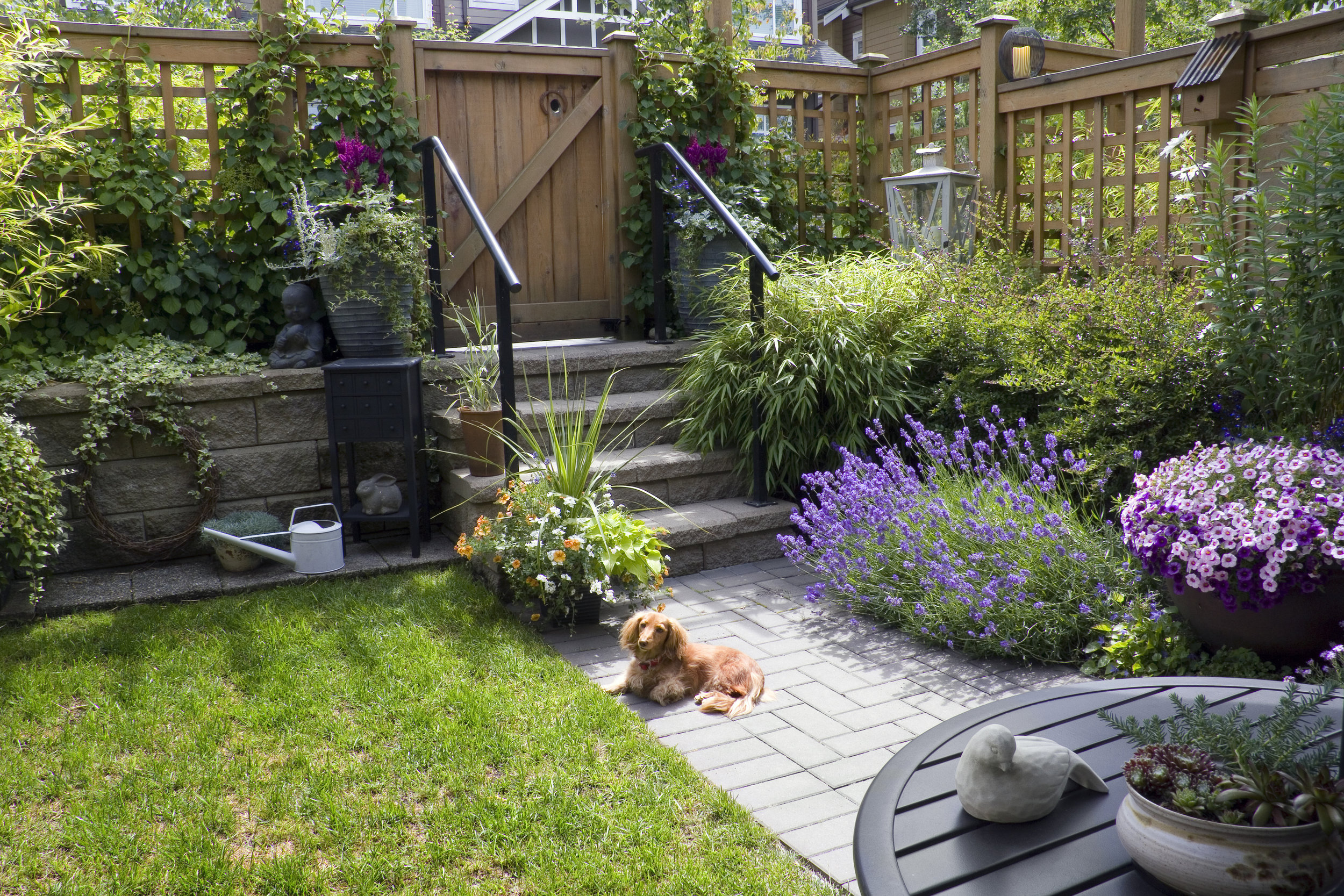Sensory Gardens For Your Dogs: Positive Impacts on Behavior
Written by Lauren Tsao, MS, CDBC, CPDT-KA
Over the past few years, photos of amazing outdoor spaces for pet dogs and shelter dogs alike have been floating around on Pinterest and Instagram. Increasing their popularity and the number of families considering letting their yards and gardens go “to the dogs”. From these ideas and photos, the inspiration for sensory gardens for dogs was born.
The idea of sensory gardens are to activate our senses, encourage interactions with our surroundings, and provide enrichment in a safe and meaningful way. Sensory gardens are a wonderful way to enrich your dog’s life and help them keep their minds keen and sharp.
One of my favorite sayings is, “An unemployed dog is a self-employed dog.” Dogs that are left to their own devices in under-stimulating environments can and do become destructive, anxious, and quite frankly, bored out of their minds.
Dogs need and deserve more than being couch potatoes who wait for us to arrive home each day, only to get let outside their mind-numbingly boring home for their ten minutes potty break. This is where enrichment comes in and sensory gardens are one of the most interesting versions of enrichment I have seen spring forth from the internet in quite a while.
My own dogs have an access to a hanging herb garden at our training facility in Jackson, MS area. My Border Collie who is very scent oriented and requires a massive amount of mental stimulation each day, loves to sniff the plants each time she goes outside.
While I do not know much about the zoopharmacognosy (self-medication for non-human animals) being proposed by Caroline Ingraham who helped popularize sensory gardens for animals, I do know as a certified professional dog trainer and associate canine behavior consult that keeping a dog’s mind busy is much more important than how many times I walk my dog around the block in a day. I want to create mentally content dogs, not super dogs that become more fit and muscular with more stamina than I can manage.
Some ideas for sensory gardens could be planting pet-safe herbs which they can sniff or taste, providing various textures for the dog to interact with, ponds and water features that gently babble in the background, or hiding spots like tunnels. The possibilities are quite endless and can be personalized to your own dogs’ likes and needs. Below I have collected quite a few ideas on how you could turn your own yard into a sensory garden and how these ideas could positively impact their behavior. Happy gardening!
Dog Sensory Garden Ideas
Dog-safe herb garden (hanging, planters, or planted directly into the ground)
Dog-safe flowers and scented plants, like marigolds
Hiding treats around your garden for your dog to sniff out
Encouraging sniffing around the garden and going on “sniffaris”
Set aside a patch of grass which you allow to grow tall and hide toys or treats among the grass
Planting plants that grow tall or hanging for your dog to brush up against
Place different surfaces around the garden, like pavers, bamboo, gravel, and more
A pond, fountain, or kiddie pool for water interaction
A sand pit for digging in, bury toys or treats in it too!
Elevated areas for dogs to climb on
Tunnels or sunken areas for dogs to hide in
For dogs that do not chase or bark at animals, add bird feeders, bird baths, and hummingbird feeder to invite new life into the garden for your dog to view
Adding windchimes or other garden decor that makes sounds
Provide treat filled toys, balls, or cardboard boxes occasionally to create more interest
Doggie pathway through the garden just for them will also be enjoyed
Dog Sensory Garden Benefits
Encouraging your dog to sniff and explore can help decrease stress and anxiety, if the scents are not overwhelming.
Noise-making items, running water, and songbirds will provide mental stimulation through sound.
The act of searching for treats or toys helps your dog hone their nose and practice a natural instinct to search for and find items using their sense of smell.
Many herbs, fruits, and veggies have health benefits for dogs when eaten. For example, mint can freshen your dog’s breath. Just be sure to do your research on what is safe and what is not!
Sand pits are excellent for re-training dogs who like to dig and giving them a new preferred location to dig that is owner-approved and dog-safe.
Many dogs love to play in water features and can tire themselves out by swimming, which is a much lower impact form of exercise than going on leashed walks or runs.
Overall, any dog can benefit to some degree from a sensory garden - even a small one in the corner of your backyard. Mental stimulation is key to life-long happiness for both owner and dog.



